In the first semi-final of Copa América, Argentina played Canada in a repeat of the opening match of the tournament. Argentina came out 2-0 winners to advance to the final, beating Jesse Marsch’s side by the same scoreline as they did in the opening match.
This tactical analysis will be in the form of a match analysis, where we will take a look at one key takeaway from each side’s performance. This will help to give fans a better idea of some of the tactics and tactical ideas of both coaches, as well as how Argentina were able to come out on top to advance to their second straight Copa América final.
Lineups
For Argentina, Lionel Scaloni made two changes to the side that beat Ecuador on penalties in the quarter-final, with Scaloni sticking with a 4-4-2 formation. Emiliano Martínez kept his place in goal, with the back four in front of him having one personnel change. Nicolás Tagliafico kept his place at left-back, with the Premier League partnership of Lisandro Martínez and Cristian Romero keeping their place at the centre of defence. Scaloni’s change in the back four was at right back, with Gonzalo Montiel replacing Atlético Madrid’s Nahuel Molina. The other change was in the midfield four, with Ángel Di María replacing Nicolás González. Alexis Mac Allister, Enzo Fernández and Rodrigo De Paul kept their places in the side. Up top, Manchester City striker Julián Álvarez partnered Lionel Messi.
For Canada, Jesse Marsch made one change, as well as a switch of formation, to the side that beat Venezuela on penalties in the quarter-final. Maxime Crépeau kept his place in goal, with an unchanged back four, left to right, of captain Alphonso Davies, Derek Cornelius, Moïse Bombito, and Celtic’s Alistair Johnston at right back. The change came in the midfield, with Marsch opting to match Argentina’s flat 4-4-2 system, as opposed to the 4-2-3-1 that he deployed against Venezuela. Jacob Shaffelburg and Richie Laryea kept their places as the wide midfielders, with new Marseille signing Ismaël Koné coming into the midfield to partner Stephen Eustaquio, replacing Toronto FC midfielder Jonathan Osorio. Up top, Jonathan David was partnered with Mallorca striker Cyle Larin.
Canada’s setup out of possession
The key takeaway that we wanted to look at for Canada was their tactical setup out of possession, with Jesse Marsch opting to defend in more of a compact mid-block, with the goal to eliminate Argentina’s ability to play from the back and progress through the two central midfielders, instead looking to force them into the fullbacks in the wide channels where they could look to engage and lock the play to one side.
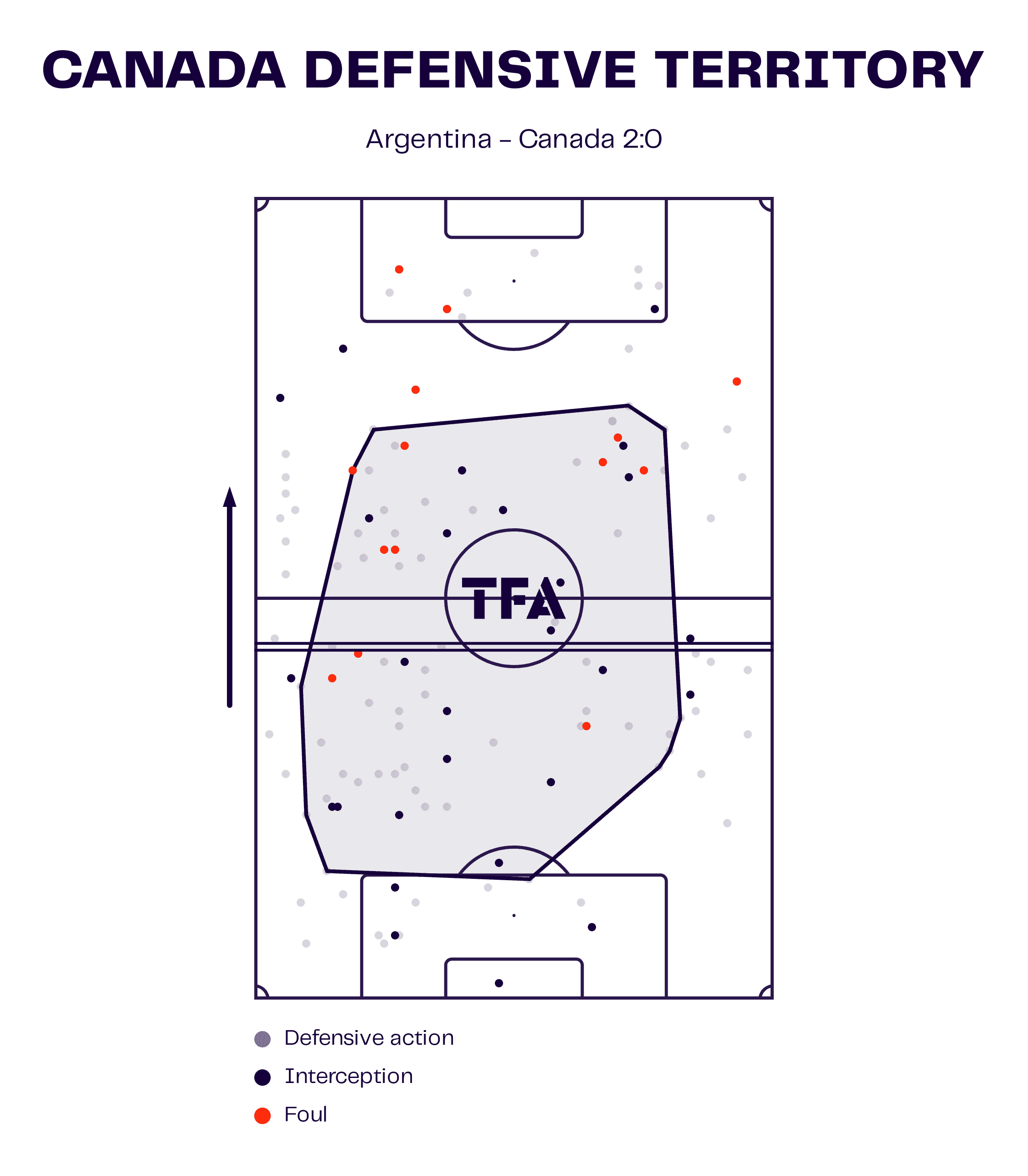
The data viz graphic above shows the average defensive territory of Canada from this semi-final, and we can see the emphasis on defensive actions occurring in the central areas of the pitch. We can also see how Marsch looked for his side to put more pressure on the right side of Argentina’s defence, with this being the way they tended to force Scaloni’s side to play when they were able to block the central areas. While they did look to press at times, most of Canada’s defensive actions tended to occur around the edge of Argentina’s defensive third, with the front two of Canada usually looking to sit off when Argentina’s centre-backs were in possession unless there was a pressing cue that activated them.
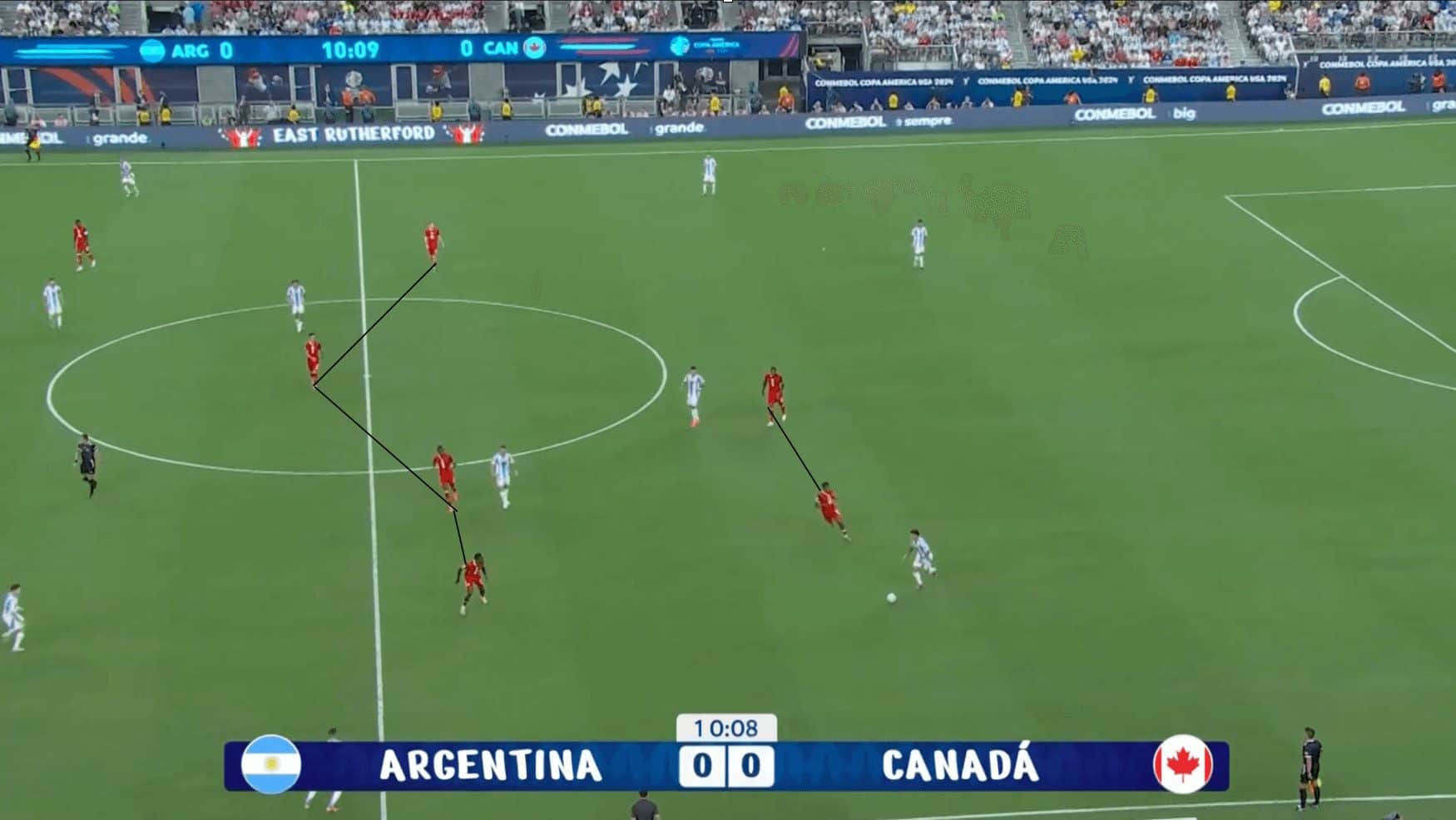
The image above shows an example of the defensive shape that Canada looked to deploy against Argentina in their semi-final matchup. As we can see from the figure above, Argentina are looking to build from the back, with the ball in possession of the central midfielder who has dropped into the back line to get on the ball.
Marsch’s mid-block setup looked to stifle Scaloni’s side when they built up from the back, and they were able to have mixed success throughout this match with this tactical setup. We can also see from this image how compact and narrow the Canadian midfield line is, with both forwards, Larin and David, looking to eliminate Argentina’s prime route of vertical ball progression.
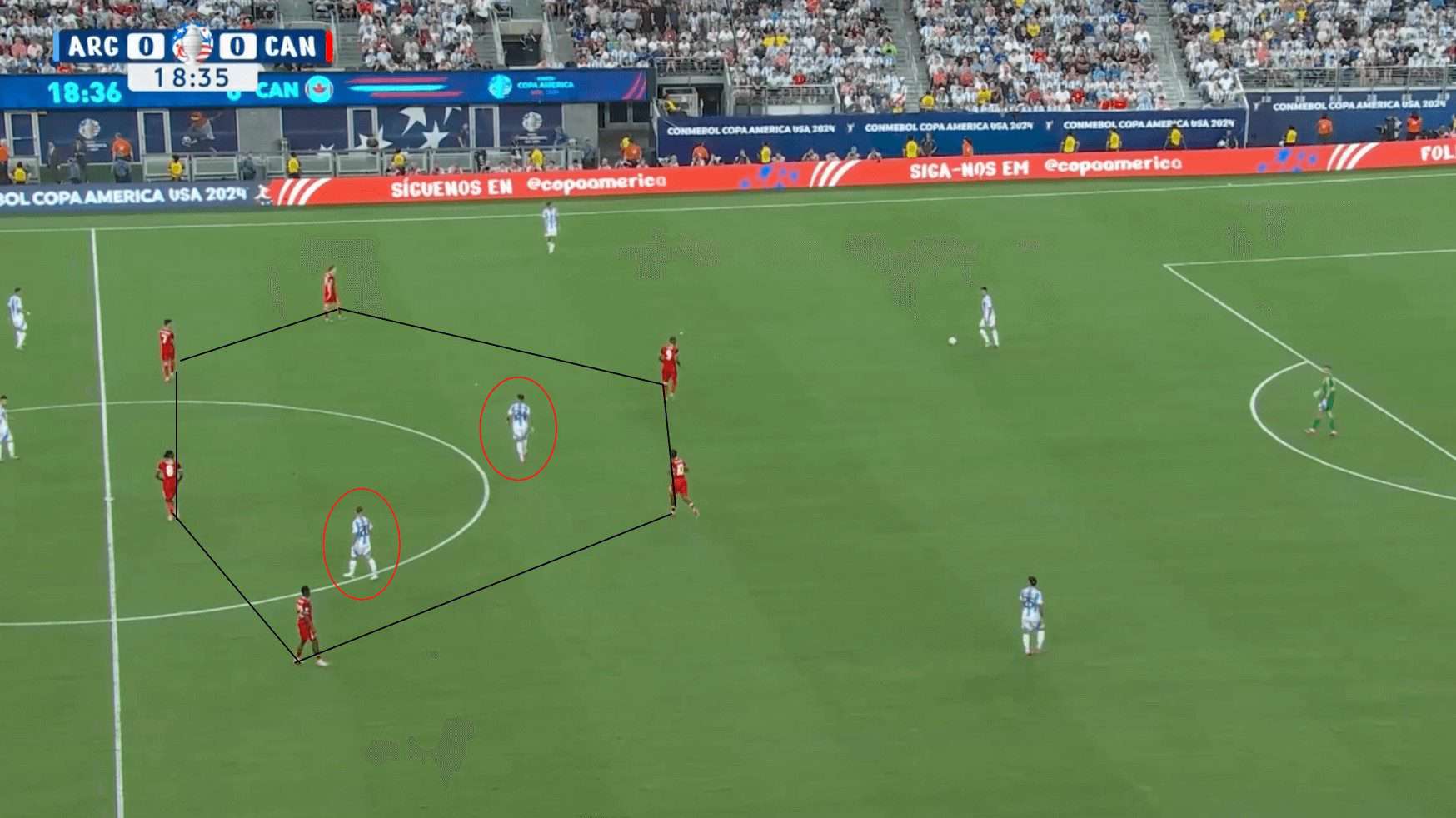
The image above shows another example of Canada’s defensive shape and what Jesse Marsch looked to do to neutralise Argentina’s attacking threat. This image shows Canada’s front six defending in more detail, with the forwards and midfielders’ tight and compact shape looking to block the central ball progression.
The two central midfielders for Argentina are cut off from being vertical passing options in the build-up. The ball eventually rotates out to the Argentine left-back before being played long towards the forward line. The Canadian defence is able to shepherd the ball back to the goalkeeper for them to begin a build-up phase of play.
While Argentina were still able to score two goals and advance to the Copa América final, Canada’s defensive strategy from Jesse Marsch was able to work with mixed success, even if they did not get the result they wanted in the end.
Dynamic midfield rotations & quick ball progression to break the Canadian defence
When talking about something that Lionel Scaloni’s side was able to have success with, it actually directly correlates to what we talked about with Canada. Argentina were able to break through the staunch Canada defence with dynamic midfield rotations and quick vertical ball progression, with Scaloni’s side able to get from back to front on multiple occasions by looking to utilise positional play and these rotations to the fullest extent.
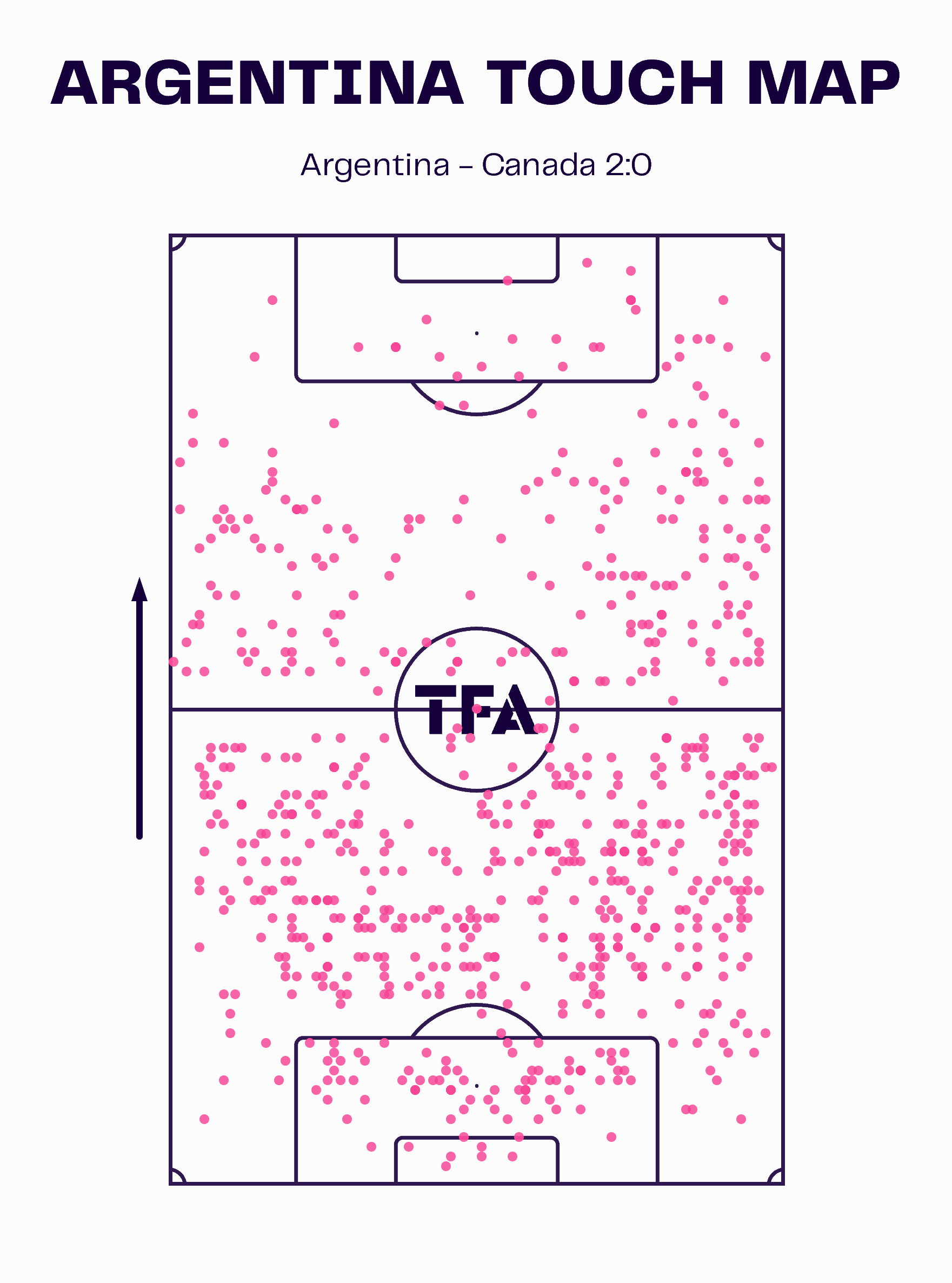
The data viz graphic above shows Argentina’s touch map from their semi-final matchup against Canada. This does help to illustrate how Canada did a good job keeping Scaloni’s side in their own half when in possession. However, we can still see that Argentina managed plenty of touches inside the attacking half of the pitch, with most of these coming as a result of quick vertical ball progression.
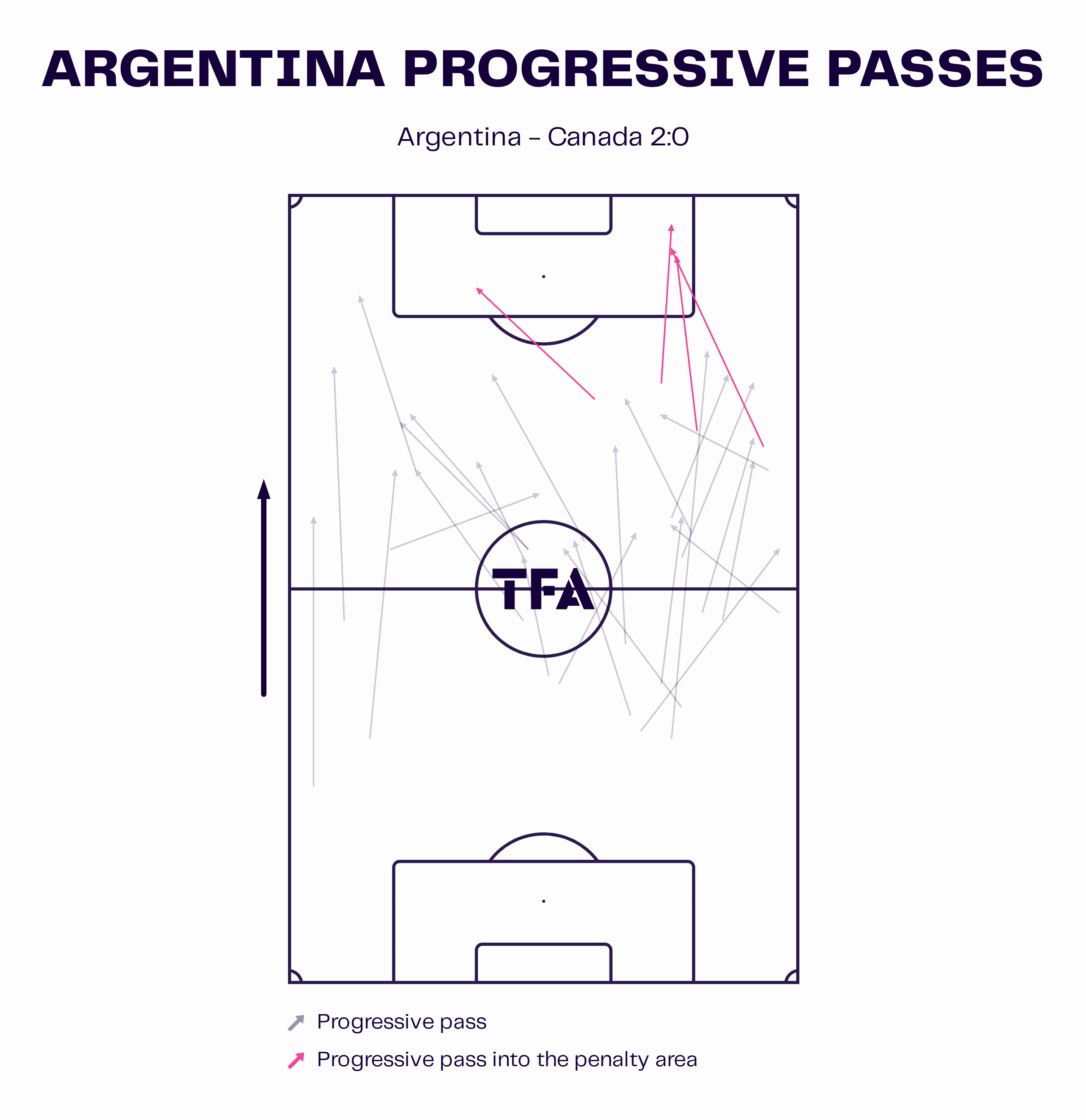
This next data viz graphic, shown above, illustrates the progressive passes that Argentina managed to play against Canada. Most of them were longer passes that originated in the defensive half of the pitch. A majority of these resulted from the Argentinian centre-backs, with Martínez and Romero looking to play passes through the Canadian midfield into the attacking players looking to drop into deeper pockets of space to receive possession.
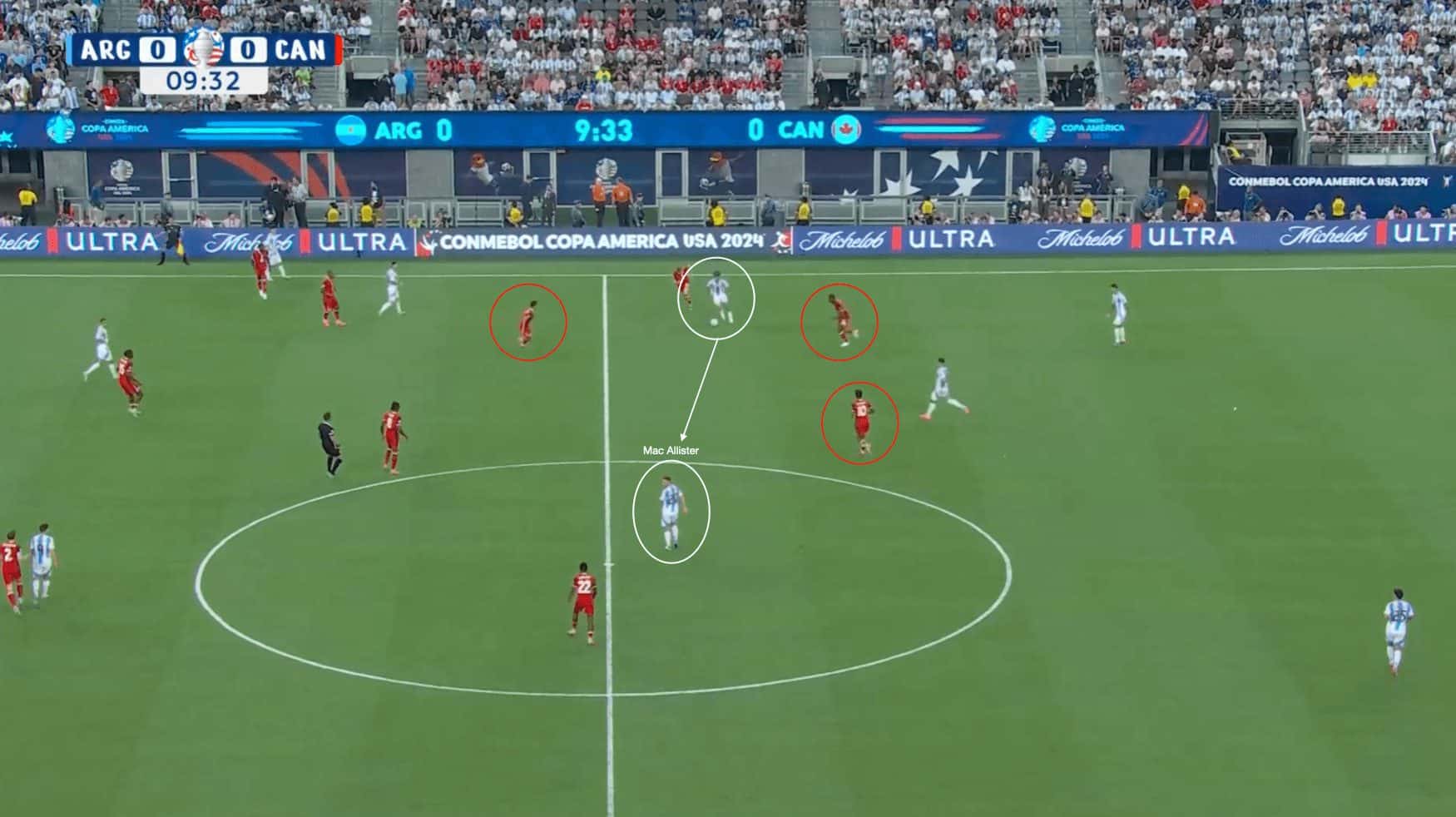
This next example is actually a two-part example, with the first image shown above. The ball finds its way out to the Argentinian player on the far touchline, and after gathering possession, the player instantly starts to get closed down by three Canadian defenders. The attacker is able to use a body feint to get past the closest defender on the inside, and he proceeds to drive into a more central area.
Alexis Mac Allister is in this central area, with the Liverpool midfielder checking his shoulder and noticing the incoming pressure if he were to receive possession. He is also able to spot the space out wide for the winger on this nearside out of the picture, with the Canada wide midfielder tucking inside to instead look to dispossess Mac Allister and be in a dangerous position to start a counterattack.
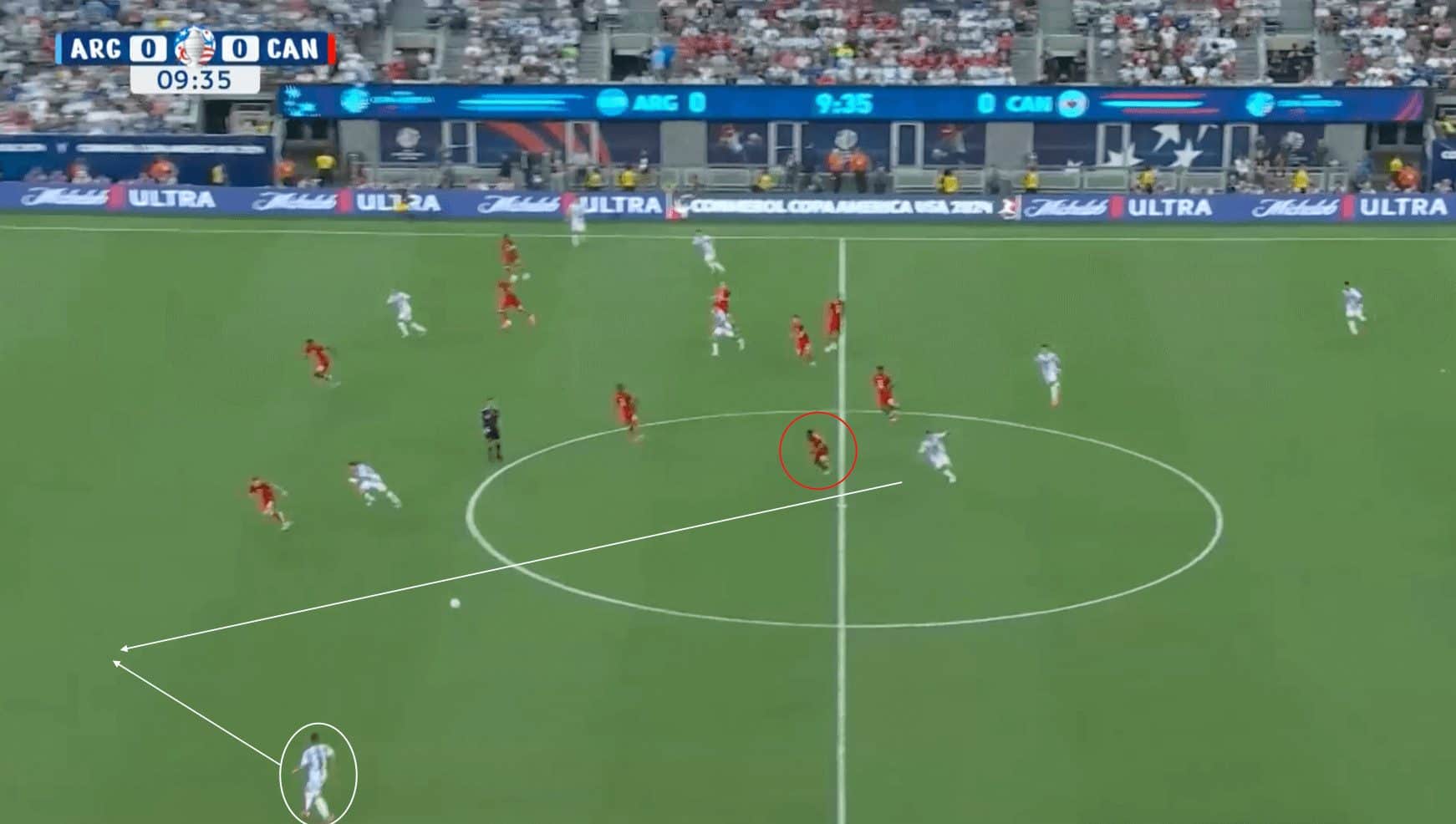
This next image shows what happens as the play progresses for Argentina. In the previous image, Mac Allister spots the player looking to close him down, and the subsequent space out in the far wide channel as a result. After receiving possession, Mac Allister is able to play a one-time pass on the half-turn into the path of the wide player, with the Canadian player tucked too far inside to defend against it.
It results in a good chance for Argentina, with the ball eventually finding its way to the edge of the penalty box in the central area, before Canada are able to win back possession. While it does not result in a shot on goal for the current Copa América holders, it shows the way they were able to bypass the defensive shape Canada were looking to set up with.
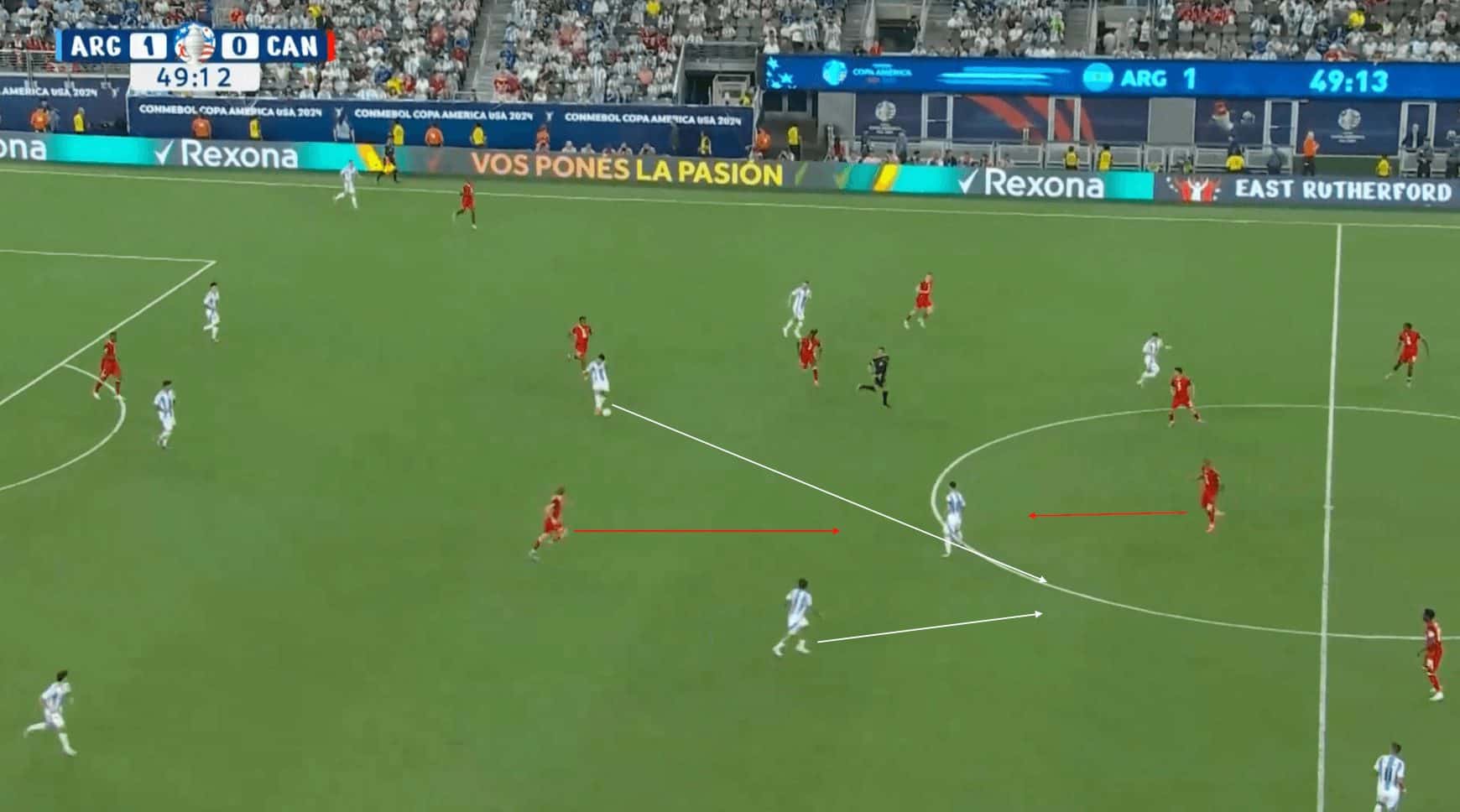
We can see again in the phase of play above how Argentina were able to bypass the Canada defence with quick ball progression, as well as dynamic movement. In this figure above, we can see how the ball is in possession of the defensive midfielder of Argentina, with Messi dropping into a deeper position in a pocket of space. The closest positioned Canadian defenders spot the Argentina captain’s position and look to close him down. As the ball is played towards Messi, he is able to dummy the ball, with it going through his legs and into the path of the player behind him. It leads to Argentina being able to quickly progress the ball into the Canadian half, with Argentina able to win a corner.
Conclusion
As this tactical analysis has been able to show, while Canada were able to defend well over the course of the match, Argentina’s dynamic movement off the ball and rotations in midfield made the difference in this matchup, with Argentina now in a second successive Copa América final, and looking for a second successive Copa crown.





Comments